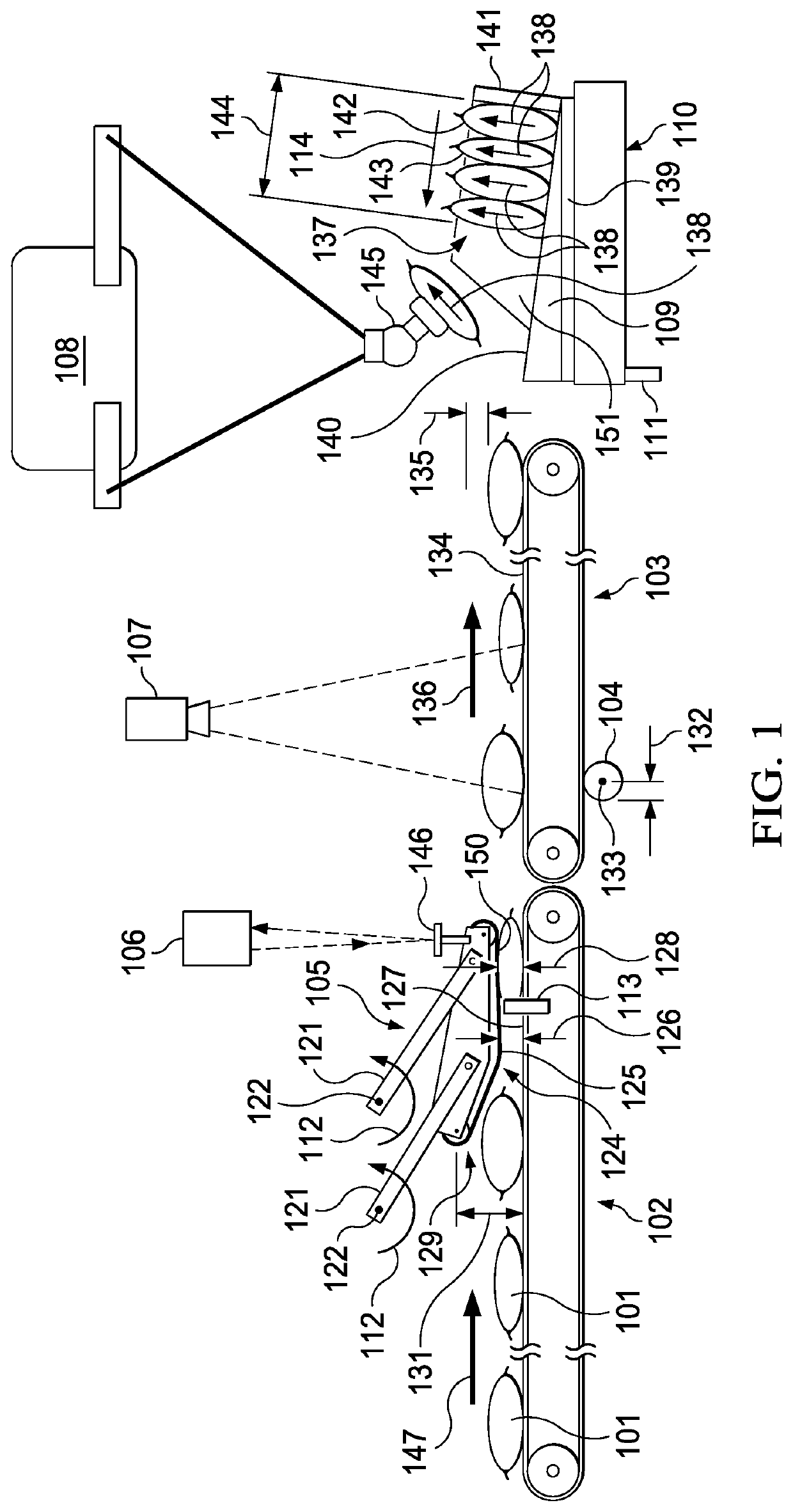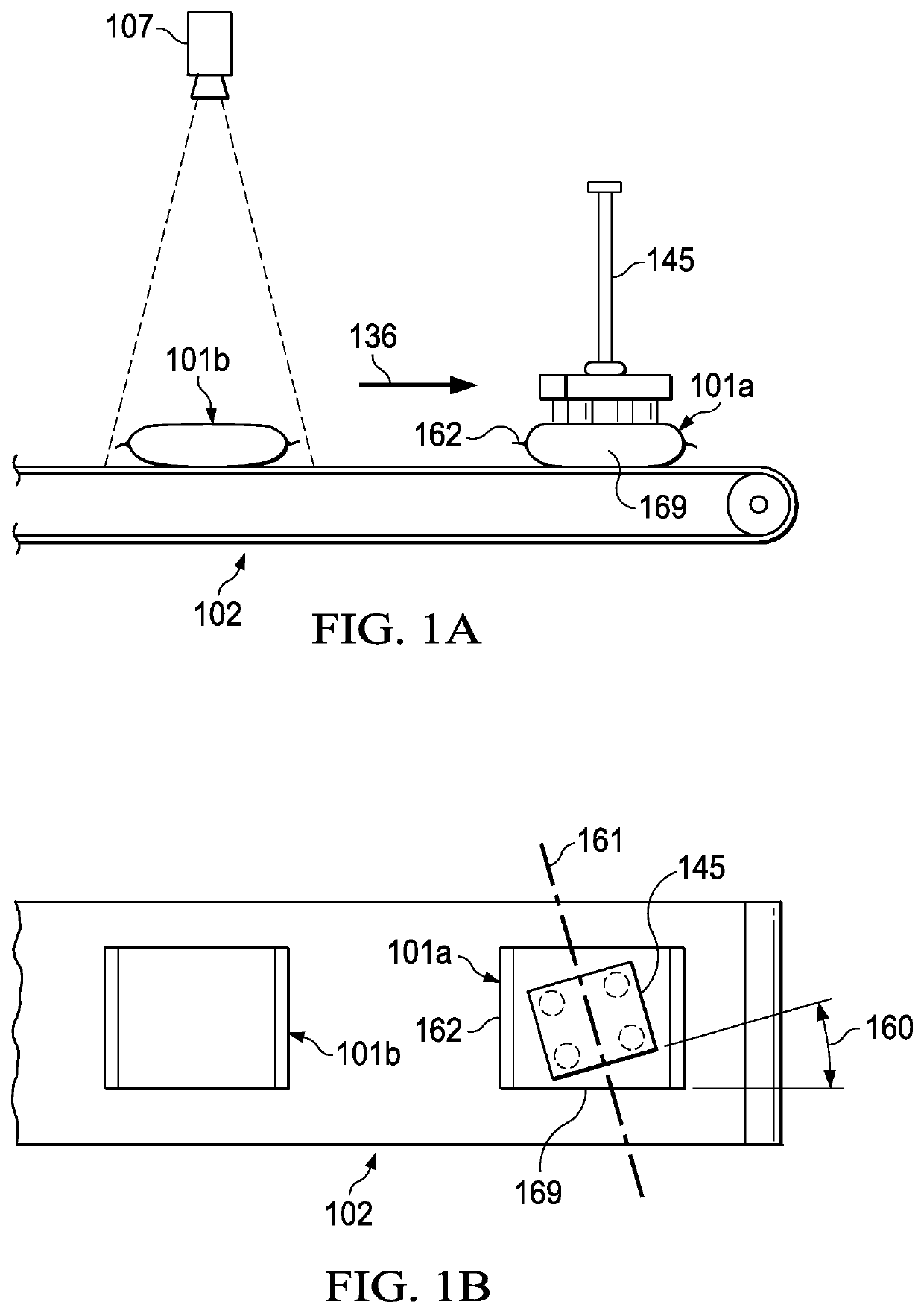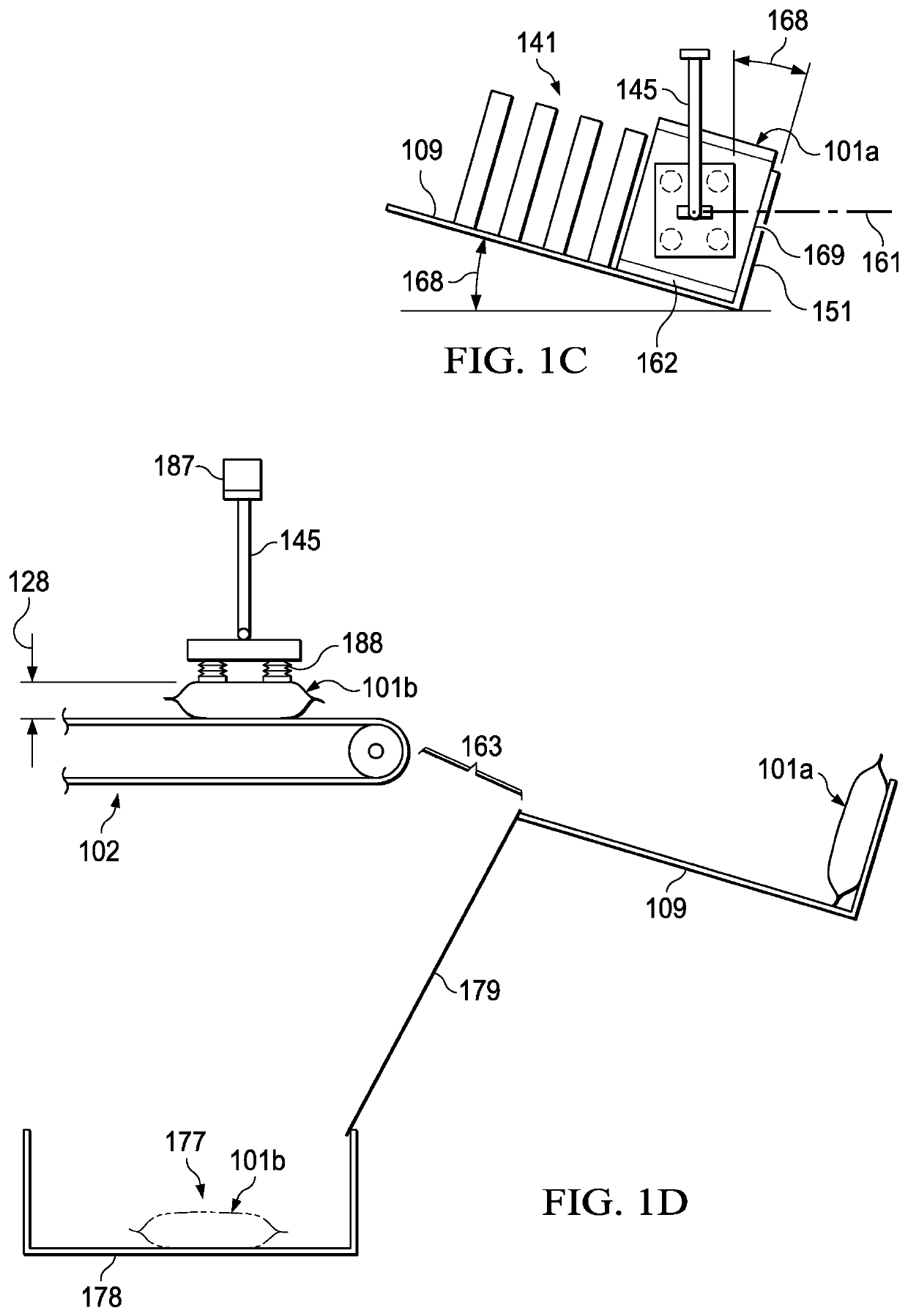Apparatus and method for transferring a pattern from a universal surface to an ultimate package
a technology of universal surface and pattern, applied in the field of apparatus, can solve the problems of difficulty in accurately and precisely picking and placing pillow bags, variations in product size, difficulty in accurately and precisely determining the position, orientation and dimensions of pillow bags, etc., and achieves the effect of reducing or eliminating misplaced and damaged products
- Summary
- Abstract
- Description
- Claims
- Application Information
AI Technical Summary
Benefits of technology
Problems solved by technology
Method used
Image
Examples
example 1
[0267]In Example 1, an embodiment of the invention was tested using two columns of bags. The first column of bags comprised bags approximating thick bags. These thick bags were actually two bags taped together so that they were approximately twice the thickness of a single bag. The second column of bags approximated normal bags. These normal bags comprised single bags. When the two columns were tested using a traditional handling system, the robot popped the third thick bag to be picked and placed. However, when the two columns were tested using an embodiment of the invention, both the thick bags and the normal bags were accurately picked and placed by the embodiment without popping bags. Additionally, the embodiment, measured, picked and placed both columns of bags without being manually adjusted after the first column and before the second column. In some embodiments, a robot can accurately measure, pick and place bags with variable thicknesses such that the thickest bag is three ...
PUM
 Login to View More
Login to View More Abstract
Description
Claims
Application Information
 Login to View More
Login to View More - R&D
- Intellectual Property
- Life Sciences
- Materials
- Tech Scout
- Unparalleled Data Quality
- Higher Quality Content
- 60% Fewer Hallucinations
Browse by: Latest US Patents, China's latest patents, Technical Efficacy Thesaurus, Application Domain, Technology Topic, Popular Technical Reports.
© 2025 PatSnap. All rights reserved.Legal|Privacy policy|Modern Slavery Act Transparency Statement|Sitemap|About US| Contact US: help@patsnap.com



